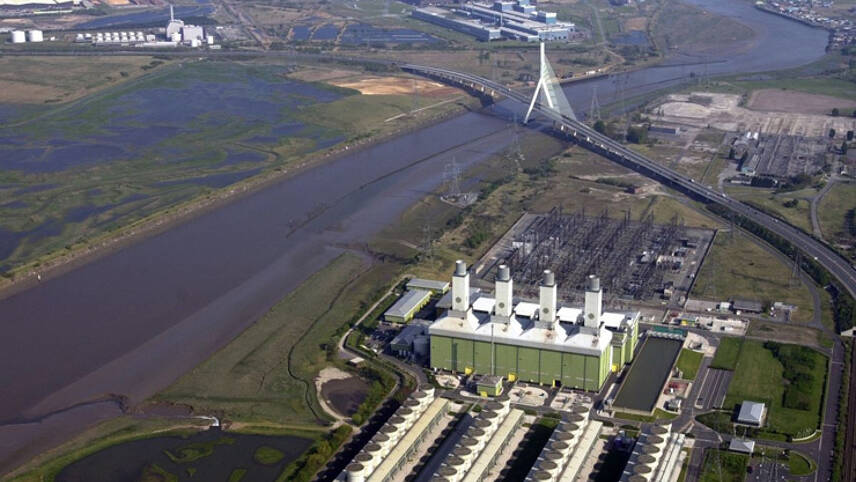Register for free and continue reading
Join our growing army of changemakers and get unlimited access to our premium content

Pictured: The Connah's Quay gas-fired power station. Image : Uniper
Consultations on the changes are being launched by the Department for Business, Energy and Industrial Strategy (BEIS) today (9 January). While the primary objective of the reforms is to strengthen security of supply amid the current energy crisis and for the future, there is a major focus on aligning the Capacity Market with net-zero. The Capacity Market launched in 2014 and has not undergone major reforms since; the UK enshrined its 2050 net-zero target in law in 2019.
BEIS is proposing new measures to offer multi-year contracts for smaller-scale electricity storage arrays. Storing electricity will be crucial to overcoming the intermittency of renewable generation, maintaining security of supply when generation conditions are poor and preventing curtailment when generation conditions are good, but demand is low. The cost of curtailment reached £507m in 2021.
The National Grid Electricity System Operator (ESO) confirmed last week that wind generation accounted for almost 27% of the UK’s mix in 2022. Only gas accounted for a larger proportion of the mix (38.5%). Collectively, renewables and nuclear accounted for 48.5% of the mix.
BEIS is also exploring multi-year contracts for other demand-side response options to balance supply and demand. Periods of three years have been floated.
Additionally, BEIS has states that it will “evaluate” the wider government package of support for large-scale long-duration electricity storage, assessing how this fits with what is available under the Capacity Market. Drax notably filed plans for the UK’s first large pumped hydro storage project in more than four decades, co-located with its Cruachan Power Station in Scotland, last year.
Emissions limit
BEIS is also poised to introduce a new emissions intensity limit for electricity generators, with the intention of “sending a clear signal to oil and gas generators”. The new limit would come into effect on 1 October 2034, if BEIS’s proposals go ahead. Generators will be able to meet the limit by either reducing the operating hours of their plants or implementing new processes and technologies to cut emissions.
The limit will apply to emissions on an intensity basis, rather than covering absolute emissions from any facility. BEIS is proposing a limit of 100g of CO2e per kWh, down from 350g of CO2e per kWh at present. BEIS estimates that a minimum carbon capture rate of 73% at a gas plant would be needed to comply with the proposed intensity limit.
Through to 2034, new emissions verification requirements will be implemented in phases.
All unabated fossil-fired electricity generation is meant to come offline in the UK in 2035, with an interim 2030 goal of achieving a 95% ‘clean’ electricity generation mix. Coal generation will cease in late 2024.
There will doubtless be questions around whether BEIS’s proposals on emissions limits will be implemented soon enough and what their grounding in climate science is.
BEIS is seeking responses from oil and gas firms to access barriers to decarbonisation under their existing, long-term Capacity Market agreements. It is also floating the idea of new managed exit pathways in the hopes of helping these firms to transfer capacity to new, lower-carbon agreements.
The Consultation on the Capacity Market reforms will run until 3 March. See a full list of proposals and find details on how to respond here.
The Consultation builds on a call for evidence launched in the summer of 2021 by BEIS. The Department has stated that it has considered all responses there when designing proposals, and is also considering the ongoing Review of Electricity Market Arrangements (REMA).
Launched in July 2022, the REMA entails the most sweeping set of changes to Britain’s electricity market design in more than a decade, including measures to de-couple global gas prices from the rate consumers pay for renewable electricity. REMA closed to responses in autumn and the Government is yet to set out its conclusions and next steps in full.


Please login or Register to leave a comment.